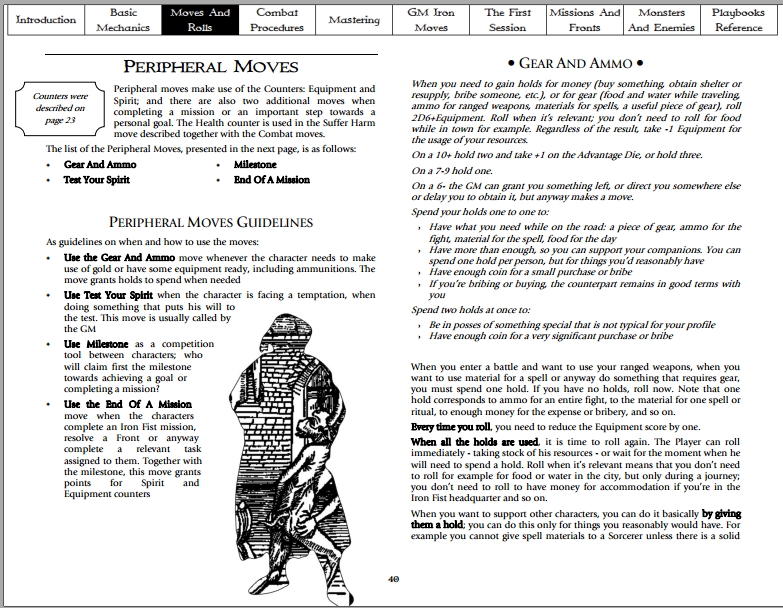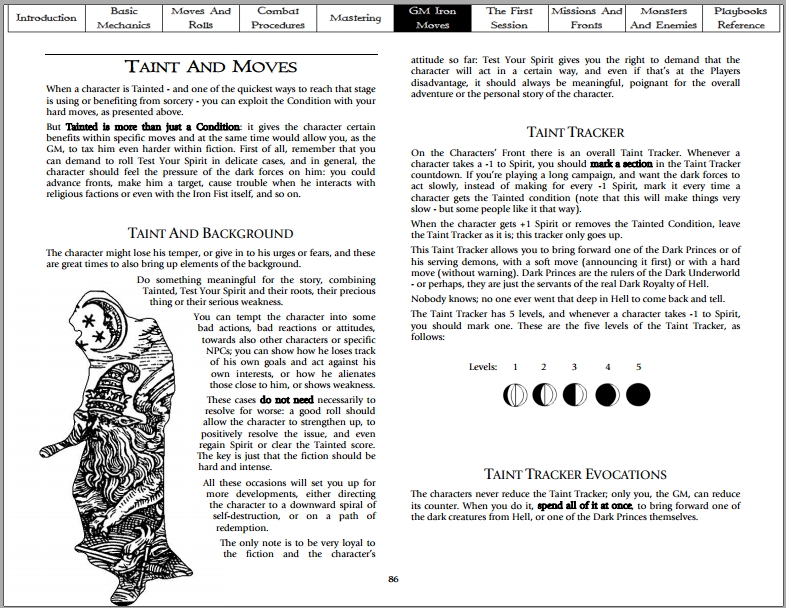How I wrote City of Judas (part three)
Again about the design process of City of Judas. I’d love to hear your opinions – as fellow game designers and as players as well.
First part: https://plus.google.com/+DavidePignedoli/posts/EzYVbYncPhT
Second part: https://plus.google.com/+DavidePignedoli/posts/iMSHo8Cjqat
Designing the Playbooks
Designing the Playbooks was very easy at the start. It’s not a coincidence that a lot of AW-hacks begin with Playbooks: they contain a great deal of the game flavor and color, they’re what you hand out to Players, they say who and what the characters (the protagonists of your story) are, they say what they can do, they contain all the Moves with their exciting options and possibilities…
Of course, after the first couple of drafts, things started to get harder: there are a lot of interactions between the Playbooks to consider, there are the various fields of expertise to define, areas where characters can overlap and others where you want to make sure they don’t; there are some things to keep in balance, and others that clearly need to be out of balance so that the game gets rolling. There are Playbooks that feel easier to design and others that feel a bit boring at the start, until you don’t find the way to turn the concept around and give it the right twist.
At this stage, I still thought: alternative playbooks, alternative combat system, but this game is still going to be running as basic Dungeon World. Or perhaps as a Dark Age spin-off, or maybe under AW. It didn’t go exactly that way.
The Counters & their Moves
I liked so much the Health Counter used in the combat system, that I made more Counters.
There was a counter for Gold (how much money the character had), for Equipment (did the character have all the necessary gear?), for Rings (that were the ranking system of the mercenary company of the Iron Fist), for Taint (how much the character’s soul was dark). Some of them were a different take on classic RPG stuff like money and equipment, and others were tied to the setting (the Rings and the Taint).
I was initially afraid to move to so many Counters (and in the end, I simplified this part in my latest design) but the feedback on the SG forum was that indeed this was an interesting feature. All of those Counters had Peripheral Moves associated with it. This lead to a high number of Moves (which is a painful topic I will discuss further in a dedicated paragraph).
The idea behind this, was to avoid tracking static numbers (how many Rings you have, how much money, which exact equipment you have), and instead make all those components to work basically like Stats.
And now, for two totally unrelated questions:
What is your favorite City of Judas playbook? (if you didn’t play it yet, we don’t mind, just tell us which one looks cooler!!)
Have you played and used the Health, Equipment and Spirit counters? Did they make book-keeping easier?


